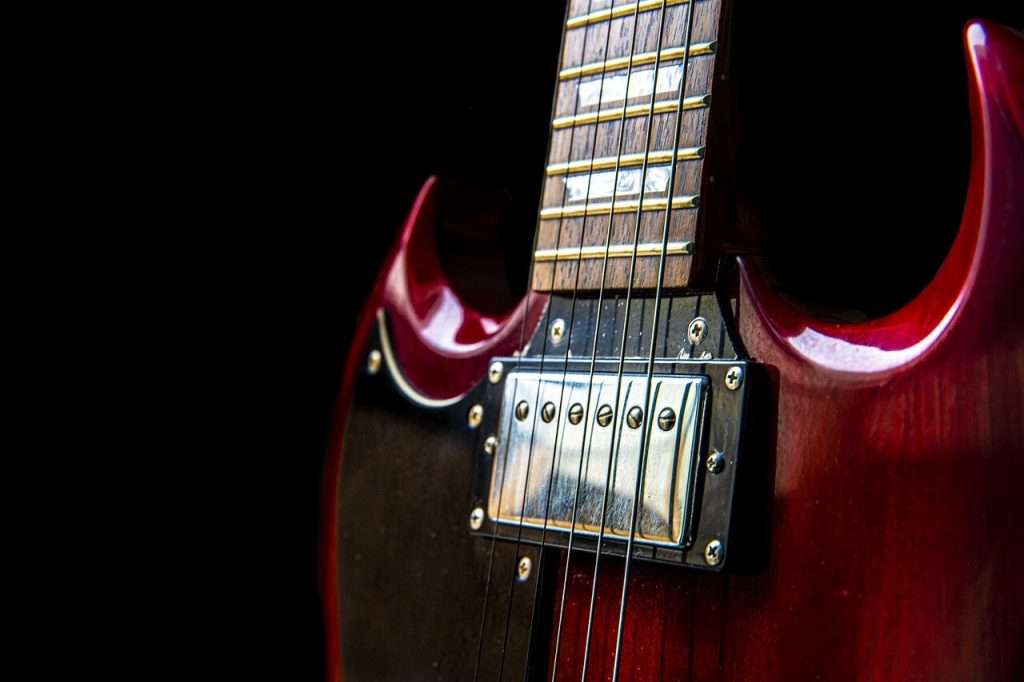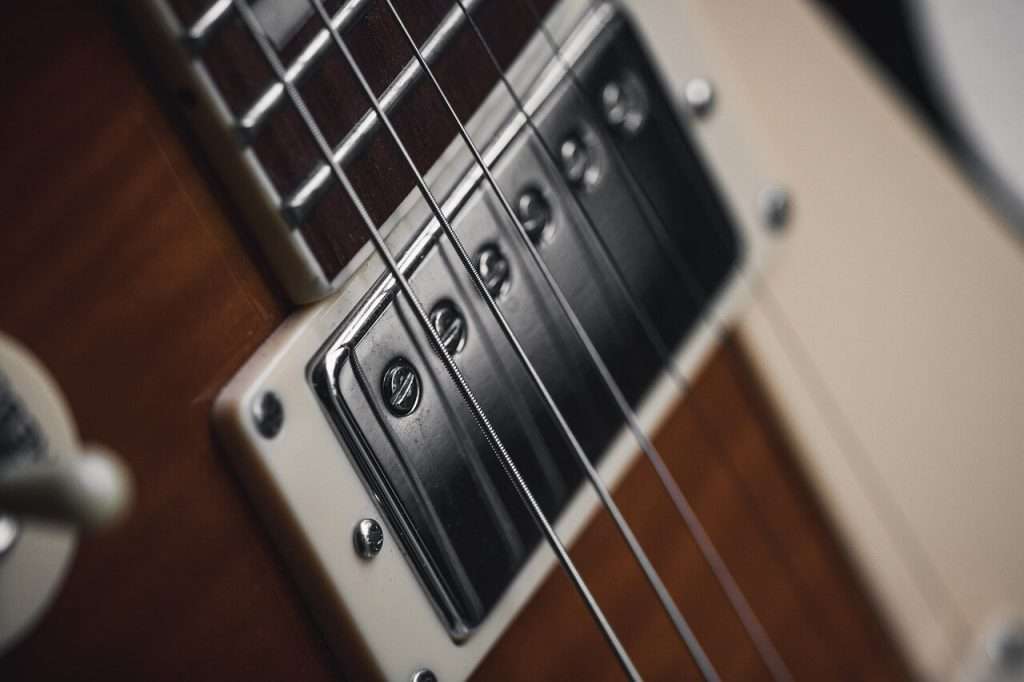Indice dei contenuti
There isn’t any perfect string, just the best string for your needs

When we think about improving the sound, we usually think about changing the pickups, the amp, buying some pedals (that’s not really beneficial for the sound quality, but at least a lot of distortion can cover the mistakes, a trick that I used to do in my first years, sadly). The thing is, though, that even smaller things can have huge benefits for the sound, and those small things are mainly strings and picks.
In this article we’ll talk about how to choose strings for an electric guitar: these are vital in your guitar playing, despite being ofter overlooked, and after all they play the main role during the playing.
For this reason, choosing the right type of electric guitar string has a high impact on the music you play and the quality itself of the guitar’s sound.
Ok but, what is the best set of electric guitar strings for you?
To find it out, you have to know the major types and perks of strings: the most important factors to consider when you choose a set are mainly the gauge, the material the presence and type of coating and the winding, but also what kind of music you want to play and how experienced you are.
THE GAUGE OF A STRING
The term gauge refers to the thickness of the strings.
The gauge of the high E string is the thickest and then it goes thicker to B, G, D, A, and low E in all electric guitars. The gauge value is measured in inch, and you can find the informations about the gauge on the package of the strings: there are six sets of strings that you may use (the most popular ones at least, but there are also different sets, mainly used for trying far more unusual sounds and that are definitely less popular).
You can see the table below for the main sizes and their respective gauges (the E on the left is the thickes string, and then goes all the way to the thinner string, the E on the right).
| Size | E | B | G | D | A | E |
| Extra Super Light | .008 | .010 | .015 | .021 | .030 | .038 |
| Light | .009 | .011 | .016 | .024 | .032 | .042 |
| Light Regular | .010 | .011 | .016 | .026 | .036 | .046 |
| Regular | .010 | .013 | .017 | .026 | .036 | .046 |
| Regular Heavy | .010 | .013 | .017 | .032 | .042 | .052 |
| Medium | .011 | .014 | .018 | .028 | .038 | .049 |
| Heavy | .012 | .016 | .024 | .032 | .042 | .052 |
The thinner the set of strings you use is and the easier it will be for you to play electric guitar, because of the smaller stress on the fingers: for this reason they are usually recommended for beginners guitarists.
They will produce a softer sound and can be easy to play (compared to thicker sets), but they will last less and break more easily.
Another advantage of thinner strings is that you can bend better and hold these bending for longer and without experiencing a painful experience (this can happen if you bend a lot on thicker strings), and also hold less tension on the guitar’s neck.
On the other hand, a heavier set of strings will help you to produce more sound and have a more sustained sound (in short every played note sound will last longer).
It also allows you to go harder on your strings and play with a more powerful and often darker sound, and beyond that your thicker strings can be very good in drop-tuning: for this reason, thicker sets can be perfect for genres like metalcore and metal in general.
The main problem, especially for beginners, is that a thicker string will require more strenght during the picking, and it can be difficult to play and maintain the pace for beginners: another problem (that can be witnessed by nearly everyone) is that is much more difficult to bend a thicker guitar string, and can be also painful.
If you’re still doubtful about what to choose, there are also “hybrid” sets of strings: they usually contain the strings of a thicker pack for the 3 lowest strings and the ones of a thinner pack for the higher part: this is especially useful when you want heavy sounds with the lower strings but still be able to solo and bend effortessly with the higher ones.

THE CORE
The core of the electric guitar is usually made of steel, and there is no electric guitar without a separated core that is fabricated differently than the rest of the string.
Nowadays most electric guitar strings come with hexagonal cores, as it’s more cost-effective and helps in the winding process.
Hexagonal cores (also called hex core) have as their main strenghts:
- an easier installation
- Slightly tighter and defined/punchier sound
Round cores, instead, are:
- easier to press and easier to bend
- with a smoother sound
The differences, though, are very subtle most of the times and they usually don’t change a lot the process of playing.
THE MATERIAL
The materials of a string usually are:
- Nickel-plated steel: It’s also known as Nickelwound string, and Nickel-plated ones are the most common. A balanced option for all levels of electric guitar players, and it is expected to be long-lasting and to produce a balanced warmth and brightness, producing less finger noise and unwanted sounds that make the sound worse.
- Pure nickel: Pure nickel strings are known for a warmer and brighter sound that suits best in jazz and blues.
- Stainless steel: For electric guitars, stainless steel strings will produce an even brighter and loud sound that works best with rock. However, many suggest that it loses the purity of sound production faster.
THE STRING’S WINDING
Winding refers to the nickel-plated steel, pure nickel, or stainless steel wrapped around the core of low D, A, E, and often G strings. There are different types of winding methods that creates a difference in the produced tone and playability.
The types of the winding are:
- Round wound: The most commonly used winding method is round winding. You will find it in any music store as it is mostly available in all forms of gauges, and you can expect a louder and brighter tone with a longer sound and sustain.
- Flat wound: Mostly jazz musicians prefer flat wound as it produces a smooth and warm tone. As the surface is flat it may feel smoother on your finger. It is also a good option for fingerstyle guitarists.
- Halfwound: This form of winding is not very common e in the market. It will produce a dark tone with a comparatively different feel when playing.
THE COATING
Some brands and models apply a coating for longer durability and better sound.
Different brands use different materials (but usually polymers) for coating, in order to prevent the normal decay given by sweat and ambiental factors.
HOW OFTEN YOU SHOULD CHANGE YOUR GUITAR’S STRINGS
The durability depends on several things, and can be influenced by the material, whether there is a coating, and how you use the strings (in general, after a playing session, it’s a good practice to clean the strings with a dry cloth, in order to have a smaller damage because of the hand’s sweat).
Anyway, for a hobby and casual player, strings should be changed once a month, but if you play daily, for example for 2 hours, then the “life span” is more or less of 2 weeks.
Anyway, you can see by yourself if you need to make a change looking for some things: for example, the guitar doesn’t stay in tune like before, there is a very dark or lifeless sound and also if there is a discoloration.
CONCLUSION: HOW TO CHOOSE THE BEST GUITAR STRINGS
The term “best” defers from guitarist to guitarist, and the form of music you want to play is a key factor too. Now that you know the different types of electric guitar strings you can follow the simple steps below:
- Set a budget
- Pick a string material depending on the kind of music you want to play and the type of sound (brighter, darker and powerful, or “average”) that you want to achieve
- Choose a wound type
- Choose the string gauge depending on your experience level and finger strength
- Choose your favorite brand depending on your budget (and watching the reviews if you’re insecure about what to buy, especially if you’re experimenting something different or if you’re a beginner)
- Purchase and start playing a lot!
If you are a beginner,
Don’t think much about the electric guitar string material. Simply go for the most commonly used guitar string with a lower set of gauges, Maybe the extra light or the light one.
Once you have got the basics you can try the other types one by one, but remember that your skills matter more than the kind of strings you use.
But if you are an advanced guitarist,
Choose according to the genre of music you play: try a thicker set of strings, the regular or the medium one, and try try to explore the strings you haven’t tried yet.
We kept it short and simple for you so that you don’t get confused with the overflow of information. We hope you find your favorite electric guitar string, the right set that will make you want to play even more often and with even more fun!
